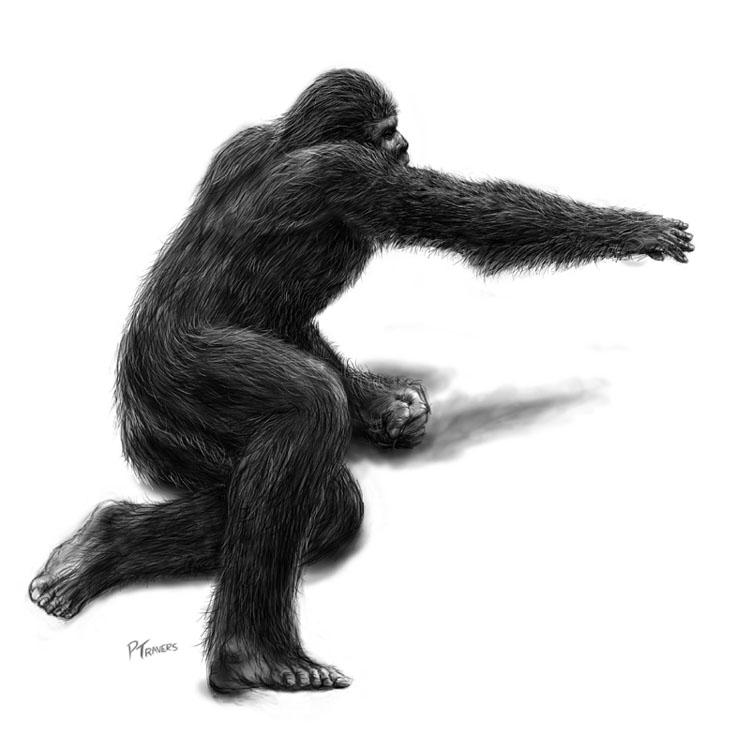SKOOKUM
[SKOO'-kuhm] — adjective. or [skoo-KOOM'] — noun.
Meaning: Strong, powerful.
Origin: Of obscure origin. Lower Chehalis skukúm < sk-w-ək-w-ə́m ghost, spirit, monster (hence “fearsome” > “powerful” in Chinook Jargon)
The word ‘skookum’ has wide historical usage in Cascadia, with a range of meanings, though commonly associated with an English translation of "strong" or "monstrously significant".
Primarily used either as an adjective for "able", "mighty", "strong", "big", "true", "solid", "genuine", or "reliable", though there is a wide range of possible usages: a “skookum house” is a jail or prison (house in the Jargon could mean anything from a building to a room). "He's a skookum guy" conveys that the person is solid and reliable while "we need somebody who's skookum" means that a strong and large person is needed. A carpenter, after banging a stud into place, might check it or refer to it as "yeah, that's skookum". Asking for affirmation, someone might say "is that skookum" or "is that skookum with you?" By itself, "Skookum!!" can also mean "like, really awesome, man!"
Skookumchuck, a common placename in British Columbia, Washington, and Idaho, means 'turbulent water' or 'rapids in a stream or river'. It can also be used as a term for tidal-exchange rapids at the mouths of inlets and bays, a regular feature of the Inside Passage, especially Skookumchuck Narrows. A short form used with personal names, "Skook", is found on the map of British Columbia at Mount Skook Davidson near the confluence of the Kechika and Gataga Rivers in northern British Columbia and Mount Skook Jim, near the head of the Stein River in the northern Lillooet Ranges between Pemberton and Lytton. Local lore in any area of British Columbia may have a Skookum Charlie or a Skookum Brown; the most famous of such nicknames was that of Skookum Jim, one of the co-discoverers of the Klondike goldfields in the Yukon. It is also the name given to a 1909 Baldwin 2-4-4-2 Mallet type logging locomotive.
Other uses:
Monsters
The word skookum was also used for a variety of evil spirits, woodland monsters, and mountain giant. While they were sometimes similar to the sasquatch, skookums could also be represented by crows, eagles, owls, blue jays, and various reptiles. While they depicted with physical forms, they were often describes as malignant entities which could inhabit people and cause serious illness. In the surviving Chinook Wawa spoken in Grand Ronde, Oregon, this variant is pronounced differently—skoo-KOOM—but when used in English with this meaning, it is pronounced the same way as the "big and strong" meaning.
Dolls
A derivative usage of the skookum-as-monster context was the application of the name to souvenir Skookum dolls, sometimes simply called "a skookum". Mary Dwyer McAboy first started making Skookum dolls in 1913 and received a patent for them in 1914. They were popular from the early 1920s until the 1960s. They were factory-made dolls that resembled First Nation people and were sold to tourists at trading posts in the western United States.
Early dolls heads were made of dried apples with the bodies made of wood, or a muslin sack stuffed with either leaves, straw, twigs or grass. Later dolls were made of plastic and had mohair wigs. The dolls were made in a variety of sizes, ranging from small babies about 2 inches (5 cm) long, with an attached mailing tag, up to 36 inches (91.44cm) high store display versions, with the most common models ranging from about seven inches (17.78 cm) to about 12 inches (30.48 cm) tall.
The dolls were costumed in stylized garb of many different First Nations, with accessories included strings of glass or wooden beads, buckskin headbands, and drums. The dolls were often packaged in distinctive boxes, with the slogan (Bully Good), and were described in marketing materials as "The Great Indian Character Doll".
These dolls were widely imitated, with Minnetonka, Milbros, or Minnehaha dolls being of similar concept. However, there are a few noteworthy and distinguishing features; Skookum dolls did not have arms or hands, as they were always wrapped in felt blankets reminiscent of Hudson's Bay point blankets, Pendleton blankets, or Navajo blankets, with merely the suggestion of arms. They are also noted for their eyes, which always looked to their right., though on occasion they were made looking to the left. Finally, the later dolls had the word "Skookum" either stamped on their brown plastic shoes or on one of their feet.




